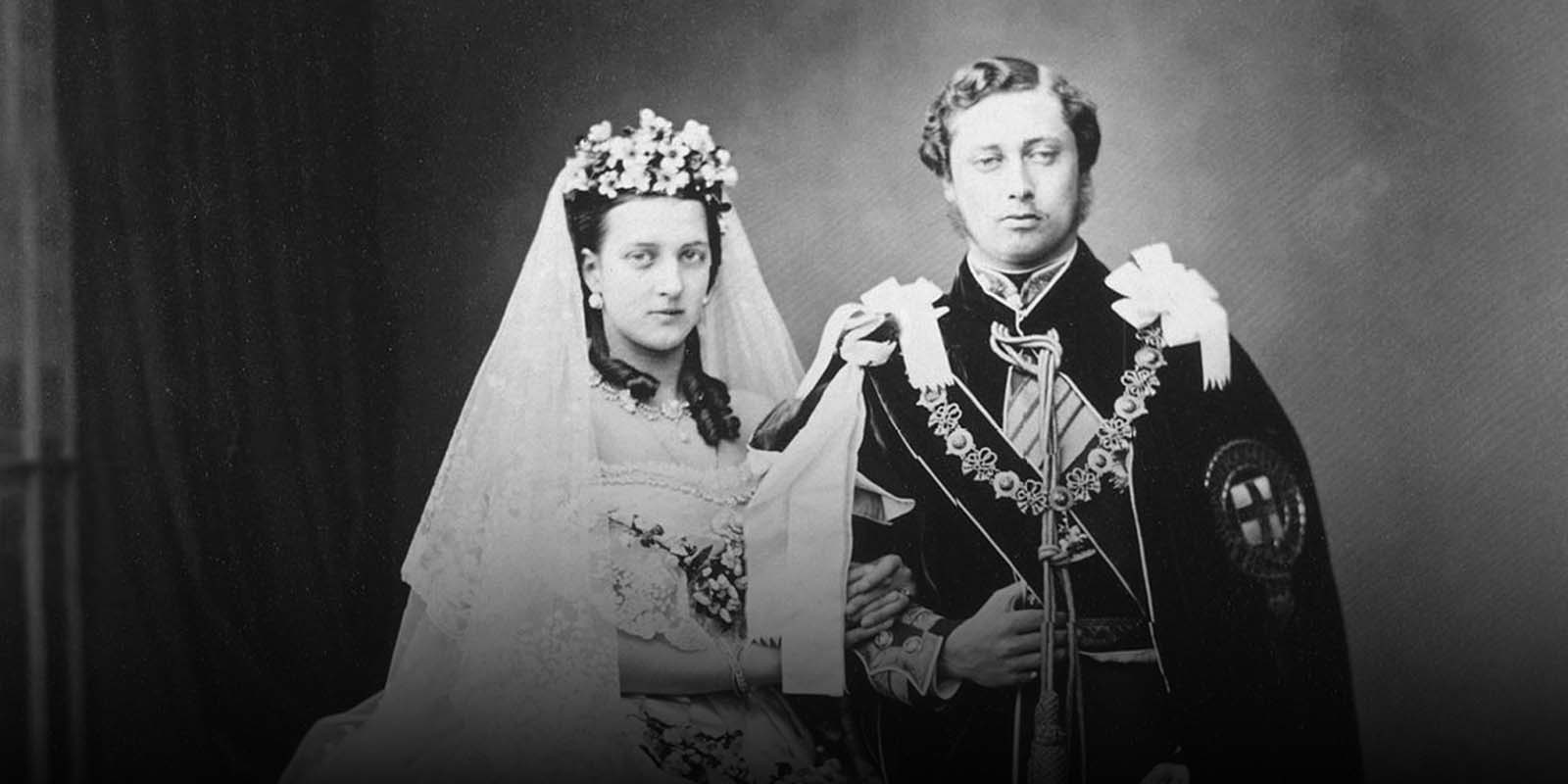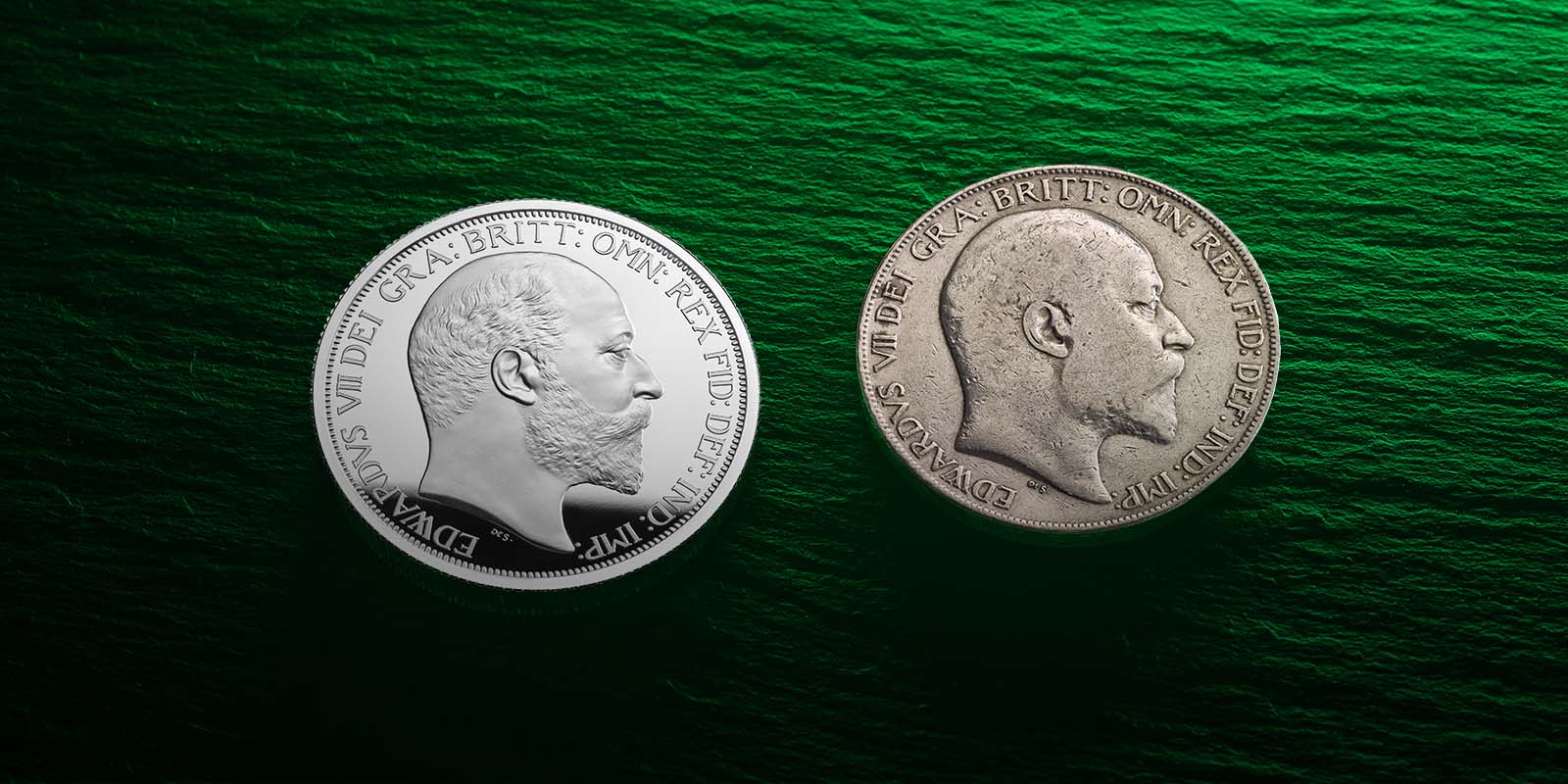Taking us back to the turn of the twentieth century and the dawn of the Edwardian era, the fourth release in our innovative British Monarchs Collection celebrates Edward VII. Following the strict religious and moral ideals of the Victorian period, Edward VII’s relatively short reign ushered in greater emphasis on the arts, culture, and generally enjoying oneself. As such, the era is often romantically thought of as a golden age of leisurely time in Britain, when fashionable women wore large hats and endless summer garden parties were enjoyed by the wealthy, in stark contrast to Edward VII’s earlier years.
Born to Queen Victoria and Prince Albert on 9 November 1841, Prince Albert Edward inherited his father’s first name and membership of the European House of Saxe-Coburg-Gotha. Affectionately called Bertie by his family, the royal couple’s first son was first in line to the throne and destined to reign. Determined to mould him into a perfect monarch, Prince Albert notoriously drove the young prince hard in his education. Although Bertie was an intelligent boy, his father’s rigorous regime and high expectations pushed him to act out and neglect his studies.
As he got older, Bertie’s natural charm and sociability made him a regular fixture in London’s high society, much to his parents’ disapproval. However, eager to prove himself, Bertie was sent on a four-month tour of Canada and the United States at just 19. He was the first heir to the British throne to cross the Atlantic, and Bertie’s good humour made the trip a big success. A year later, Prince Albert died and Queen Victoria went into mourning for her beloved husband, famously wearing black for the rest of her life.

With his mother temporarily stepping back from public life, it was time for Bertie to marry and settle down. Betrothed some years earlier to Princess Alexandra of Denmark, he married the princess in a modest ceremony in 1863, and the couple went on to have six children. Socialite circles loved the royal couple for their fabulous parties, and many looked to the well-travelled prince as an arbiter of good taste in men’s fashion. At the same time, tension plagued his relationship with his mother; they disagreed on many things and her disapproval continued throughout his life.
Queen Victoria died in 1901, making Bertie King of the United Kingdom, Emperor of India and King of the British Dominions at the age of 59, ending his stint as the longest-serving heir apparent in British history. Choosing to reign under his middle name, Edward, he was already hugely popular with the public, whilst his affable demeanour and attendance at public events set the tone for the modern style of monarchy that followed. Also known as the ‘Uncle of Europe’, Edward VII was related to most of Europe’s royalty and his interest in foreign affairs led to him being well travelled and well versed in diplomacy. He also pushed the modernisation of the military and navy and helped facilitate the Entente Cordiale treaty with France, both of which proved to be vital when war broke out after his death in 1910.
During Edward VII’s reign, international branch mints struck the ‘chief coin of the world’, The Sovereign. Read more about the story behind one of most popular coins of Edward VII’s reign here.


